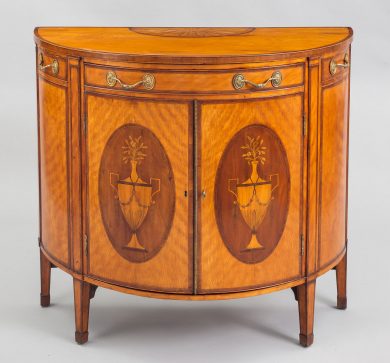
DATING ANTIQUE FURNITURE
It is very hard to determine the age of an antique from the appearance of the front of the piece. The front will tell you the style of the piece but not the age. Although the front might be in excellent condition, it could very well be a reproduction or have been altered in some way. Wood is subject to wear and tear and is easily damaged. But the wonderful thing is that it can be repaired by expert restorers or conservationists.
One of the most important factors that determine the age or authenticity of a piece of antique furniture is construction. That will include the drawer, the back and the bottom.
Drawers
The early 17th Century is when the drawer came into general use. You must look at construction, woods and hardware. These will give you clues as to age.
In the 17th Century drawers were nailed together with grooves at the side of the drawer that fit into side runners in the carcass.
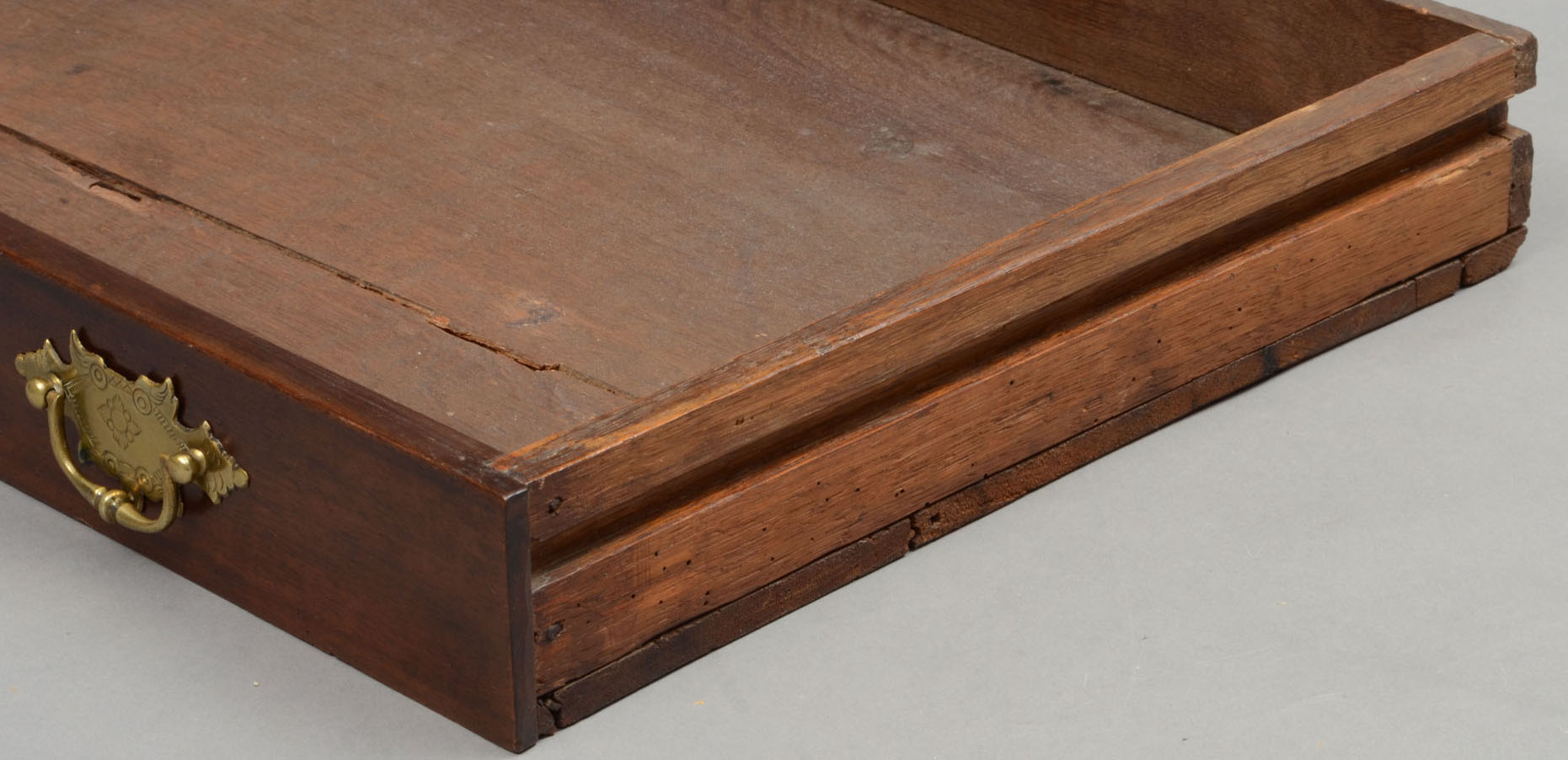
Bottom runners appeared in 1680. Pulling the drawer in and out over time will cause wear on the runners. These have probably been repaired or replaced. The hardware or brasses will also give an indication of age. Look inside the drawer front to see if there are other holes where the original brasses might have been. Also if the hardware has been replaced, you might see darker wood on the front and an indentation where the original brasses were. In English furniture, the drawer linings are usually oak. The dovetails would be crude and would be hidden by moldings.
In the 18th Century, good quality drawers were no longer nailed. They would be dovetailed. The finer the piece, the finer the dovetails. The sides would be oak with rounded top edges. The bottom boards would also be oak and would be made from two or three pieces, the grain would run from front to back. After 1770 the grain would run from side to side. Also very important on larger drawers, there would be a standard bearer running down the middle of the drawer for extra support. As in 17th Century drawers, look to see if the runners on the bottom of the drawer have wear. If there is wear, the inside of the carcass should correspond to show that wear. In the 19th Century sometimes the drawer bottom board would be one piece.
When the dovetails are handmade you will see a scribe marking the edge of the dovetail.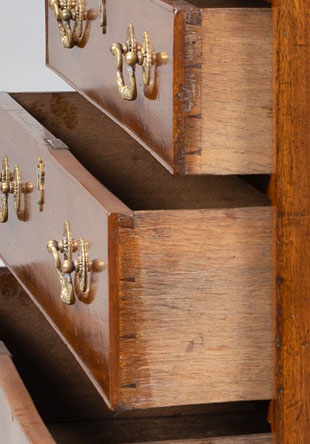 Pull out all the drawers and line them up to see that the dovetails match on all the drawers. Make sure that the wood of the carcass, drawers and back matches. If not, there probably has been some alteration or restoration.
Pull out all the drawers and line them up to see that the dovetails match on all the drawers. Make sure that the wood of the carcass, drawers and back matches. If not, there probably has been some alteration or restoration.
Any museum curator will tell you that it is very rare to find a piece of antique furniture that has not had some form of restoration over the years, no matter how minor. This is quite acceptable if the repair is skillfully done and I always point this out to my clients. Most often an excellent repair does not affect the value of the piece to any great extent.
The Back
When looking at a case piece such as a chest of drawers, a chest on chest, a secretaire bookcase, a sideboard or even a side table, the back construction will be a sure indicator of age. If the piece is in two sections, like a chest on chest, the backboards should all be similar in the top section and bottom section. The grain should be going in the same direction. The boards should have oxidized to the same color.
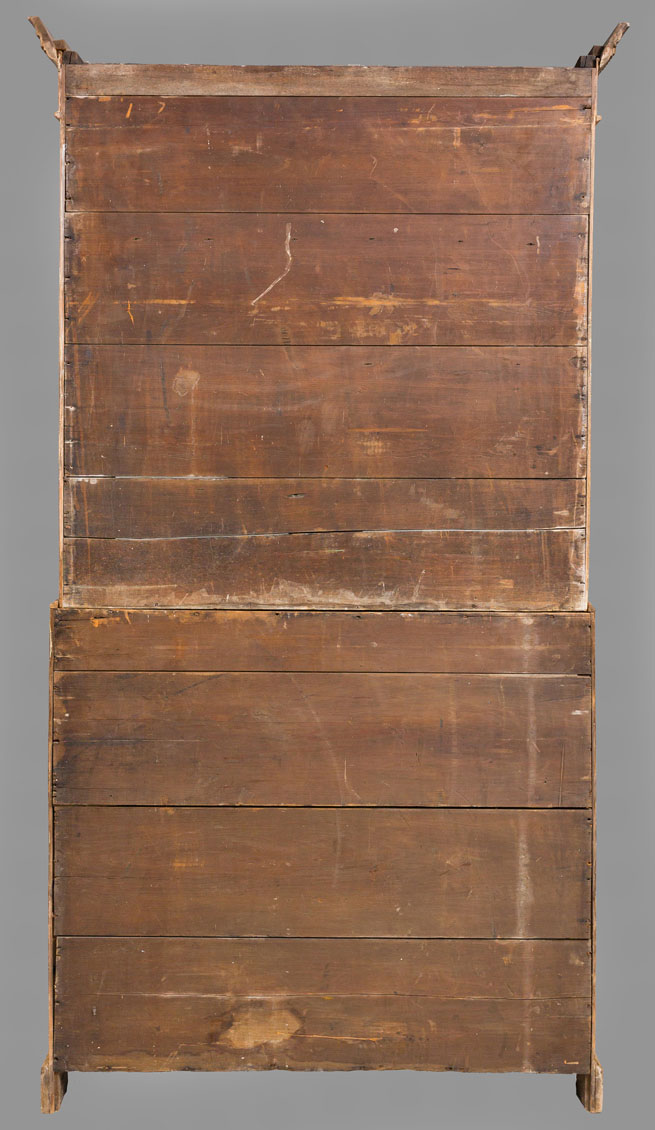
If there is restoration, you will see it in the color of the wood. The repair will be much paler and look newer than the old wood. If the boards go in opposite directions or the color is different, most likely it is an alteration or a “marriage”. A “marriage” is the union of two separate pieces to produce a more saleable two-part piece.
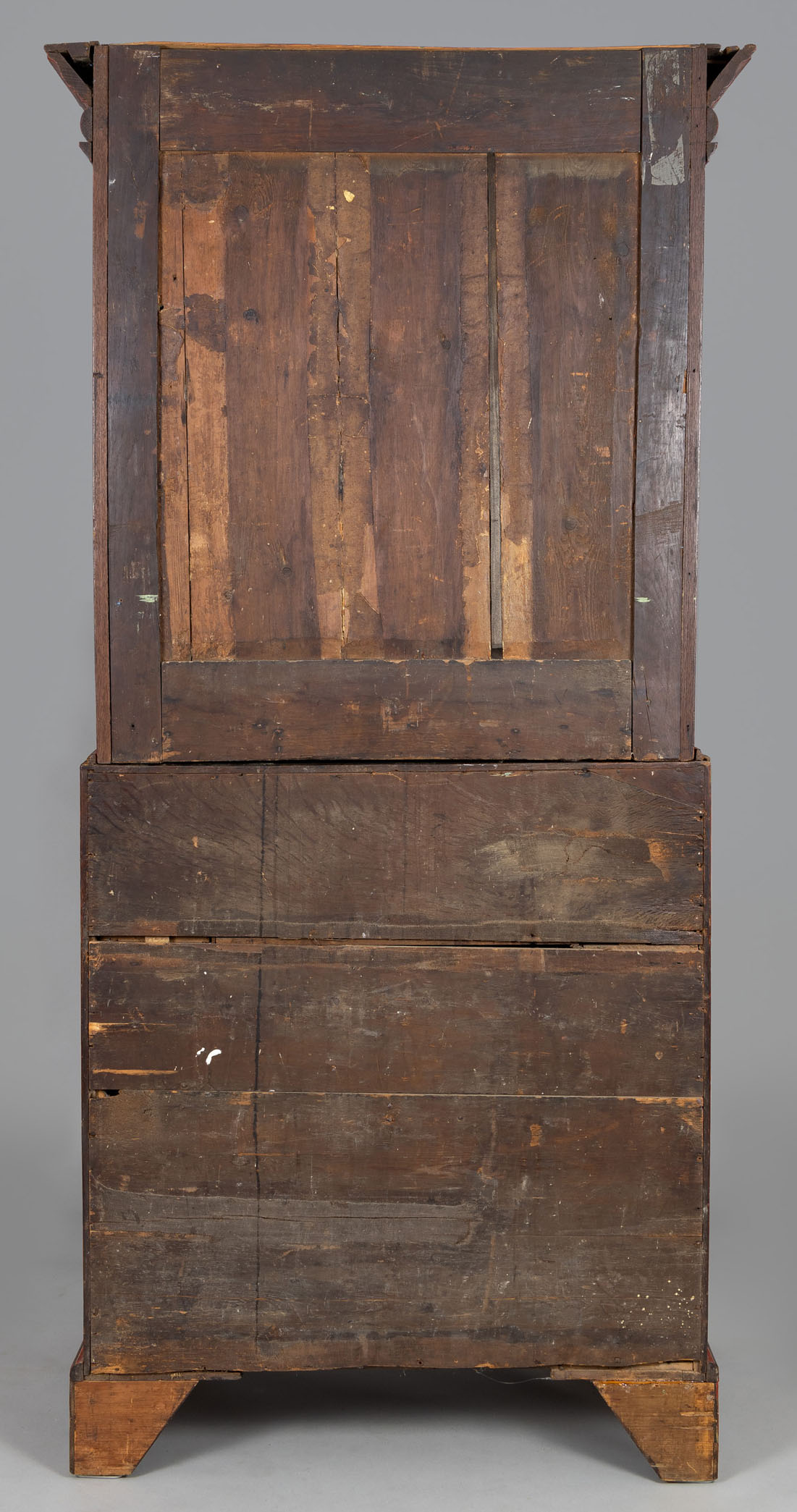
If there are spaces between the backboards, that is normal shrinkage and is caused by the wood drying out. This is expected and happens over a long period of time. A restorer would use linen strips that would be glued to the wood to close the gap between the boards. That also is a good indicator of age.
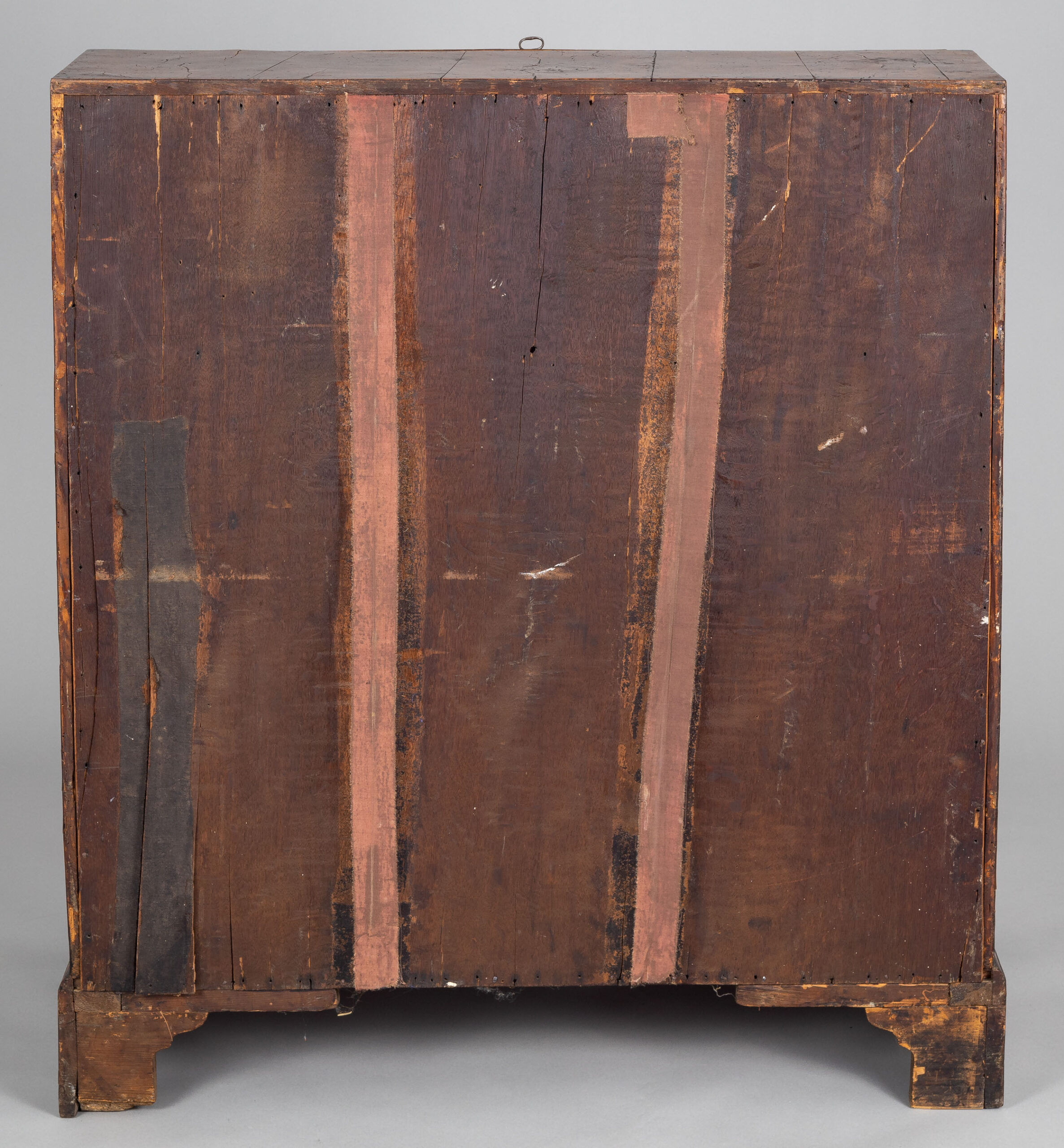
The Bottom
I always look at the bottom construction of a piece. This is one of the best ways to determine age. The bottom boards should have oxidized to a dark color. Most of the corner mounts should be in place and be the same color as the bottom. 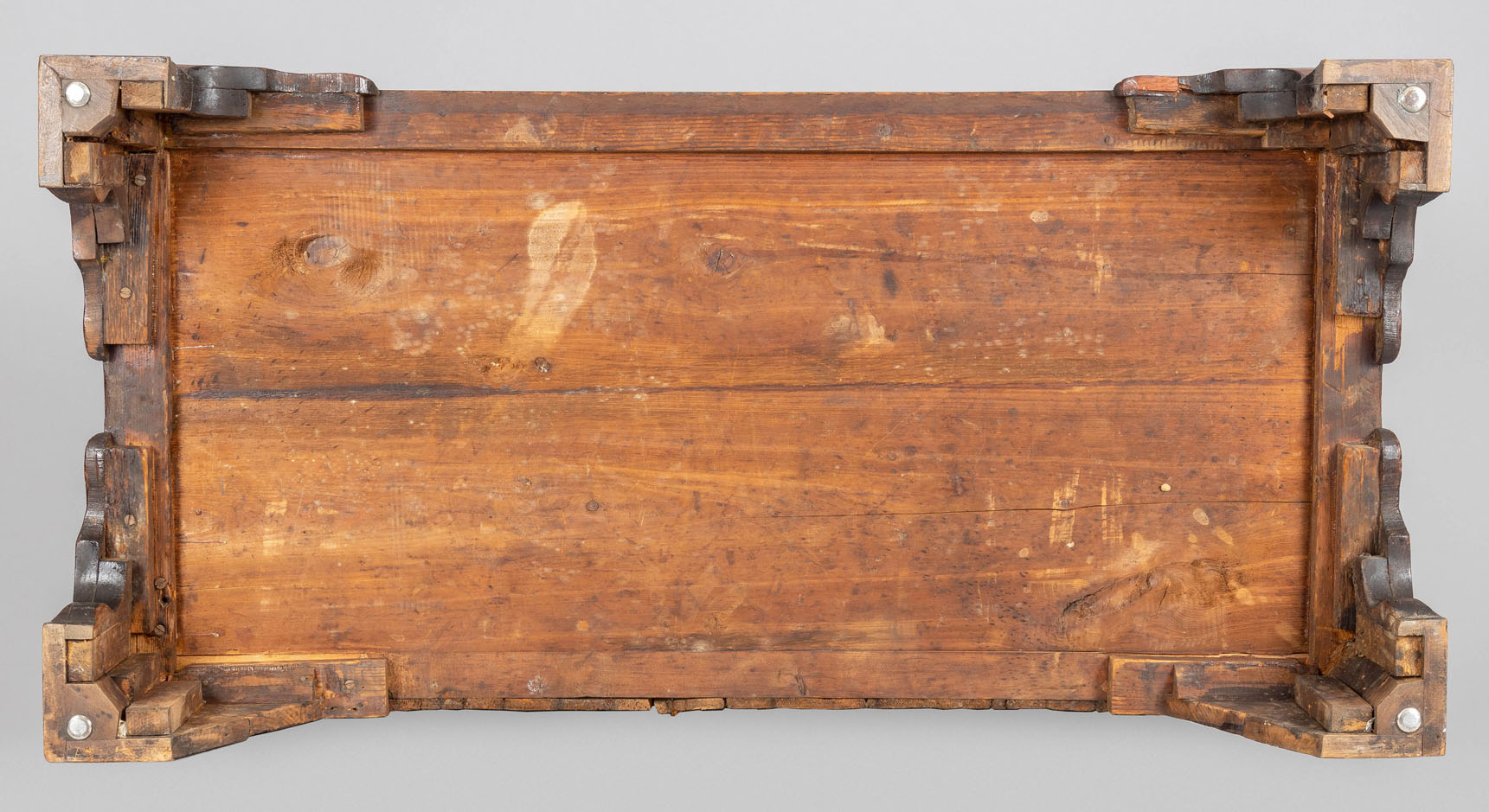 The piece over time will also have accumulated a lot of dirt. This is a good thing. The feet, no matter what shape, should all be original. If not, they will most likely be different colors or of different construction. Very often one or two of the corner mounts will have fallen off because over time the glue dries up. Also most likely you will see hand planing on the back of the feet. These are also good signs of age.
The piece over time will also have accumulated a lot of dirt. This is a good thing. The feet, no matter what shape, should all be original. If not, they will most likely be different colors or of different construction. Very often one or two of the corner mounts will have fallen off because over time the glue dries up. Also most likely you will see hand planing on the back of the feet. These are also good signs of age.
CARING FOR ANTIQUE FURNITURE
Are you fortunate enough to possess fine antique furniture? Caring for your antique furniture will insure the same pleasure you receive from ownership for generations to come. With a little loving attention, a good furniture piece should last another century or two. Most importantly, do you wish to keep it looking good and staying that way? Follow these tips from leading restorers.
Heat and Humidity
Firstly, antique furniture should never be placed close to heat. For instance, vents, radiators or any source of direct heat. Above all, direct sunlight is a enemy of antique furniture. Conditions like this can lead to veneers lifting and joints drying out. Additionally, wood subjected to a dry house will gradually give up moisture. It will start to shrink and split along the grain. Therefore, caring for your antique furniture will mean you should keep it at least two feet from any heat source.
Next, proper humidity levels are essential to the integrity of antique furniture. That is your responsibility as a purchaser. Additionally, invest in a good humidifier. One option is a free-standing type that uses several quarts of water a day. Option two, is a humidifier that can be plumbed-in permanently in a central location of the house. Most importantly, maintain 45-55% relative humidity for an indoor temperature of 60-70 degrees. Additionally, buy a good quality hygrometer to monitor the humidity levels.
Dusting and Waxing
Secondly, always dust with a soft cotton cloth or feather duster. Do not use spray dusters on your antique furniture as they contain silicone. As a result, your wax finish will ultimately be damaged.
Do not over polish antique furniture; too much wax can become sticky. For most furniture once a year should be enough. A dining table in daily use should perhaps be wax polished more often. Good quality paste wax like carnauba is best. Start with one or two tablespoons of wax inside a few layers of cheese cloth or an old cotton tee-shirt. Next, knead the wax through the cloth, forming a pad. After that, rub in the direction of the grain. In this way, you will avoid smears and streaks. Next step, buff with a clean lint-free soft cloth to a mellow luster. You will find, the heat produced by friction when polishing softens the wax. The right pressure of the hand produces the flat, reflective surface. This is what will give the piece of antique furniture it’s shine. Remember, do not use a commercial spray or wax.
Cleaning and Problem Solving
However, if a dining table gets greasy or sticky use a 50/50 mixture of vinegar and water to clean. If you do this, make sure the cloth is not too wet, just damp. Then, rub it dry and wax sparingly.
Another hint, rub pieces of candle wax along the friction parts of drawers, like runners and slides. Sticky drawers will move much better.
Also, coasters or mat protections are an important for your antique furniture. Remember, do not set glasses, vases of flowers, hot containers etc., on the surfaces. You will find, serious water or heat marks will have to be dealt with by a professional restorer.
Sometimes pieces of inlay or veneer may come off when dusting or waxing. Be sure to keep them, however small. If you do, you will save hours of a restorer’s time – and your money
Patina and Refinishing
The patina that builds up on a piece of antique furniture is very precious. In most cases, it is as a result of many years of wear, polishing, oxidation and light. What is more, patina is the aging process that distinguishes poor quality from the very best. In most cases, you should never consider having the surface stripped and re-polished. However, if the surface is really very badly marked or if the finish no longer protects the wood adequately you could consider it.
Above all, regard your fine antique furniture as something requiring regular maintenance, like your house and your car. Most importantly, get a good professional restorer to look it over every few years. In this way, you will minimize the amount of major work to be done in the long run.

 755 North Main Street, Route 7
755 North Main Street, Route 7